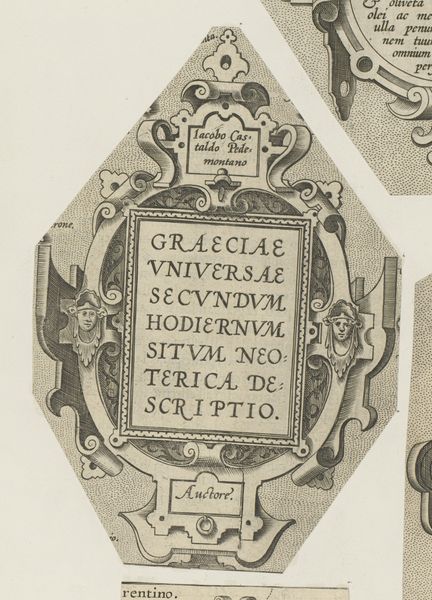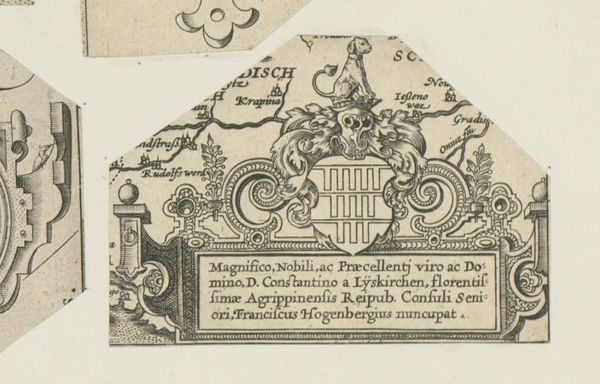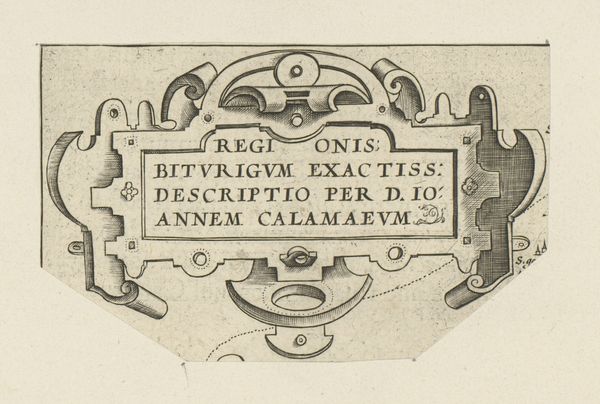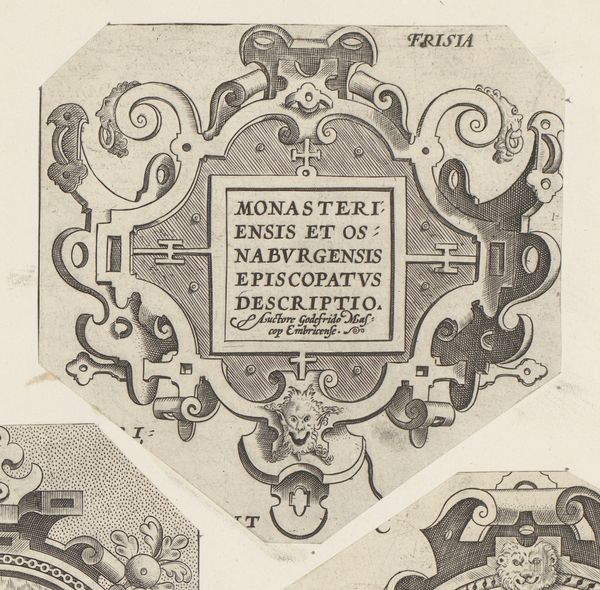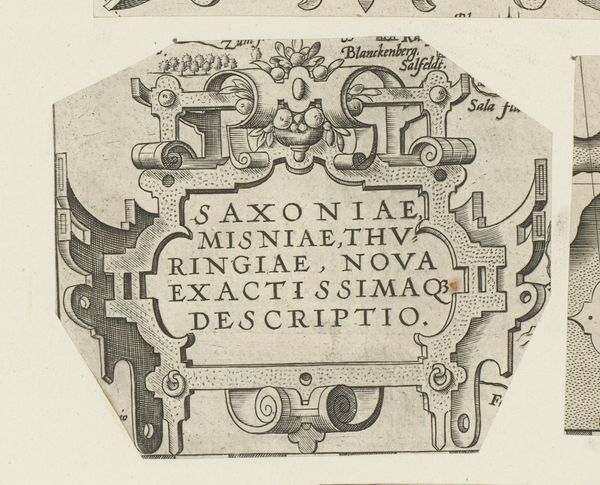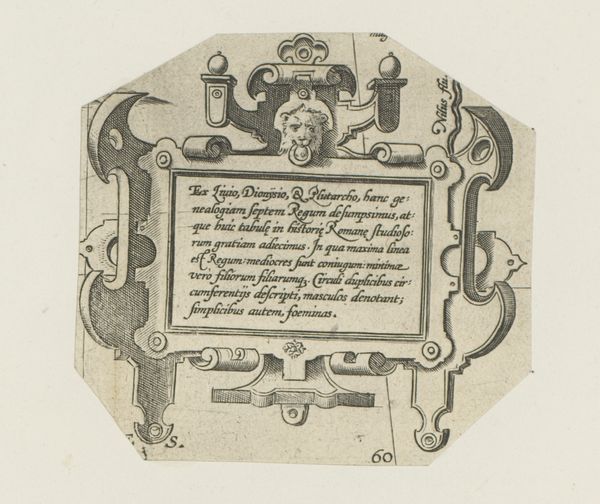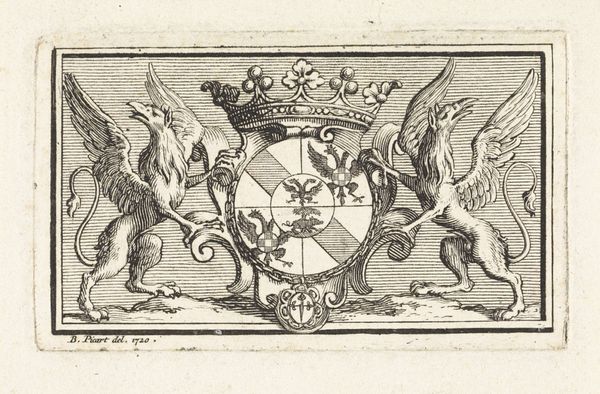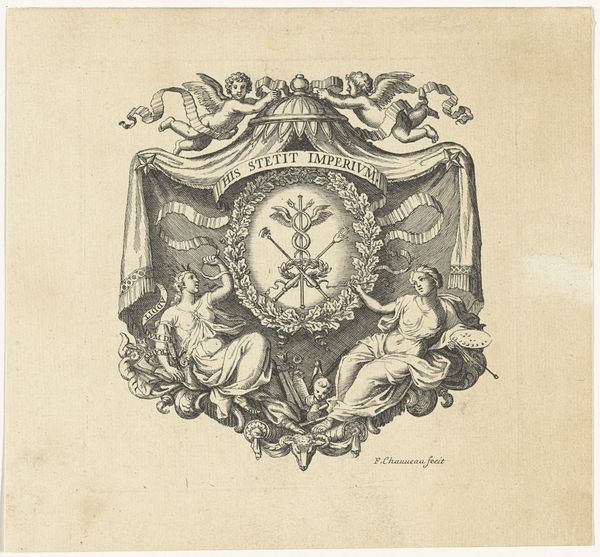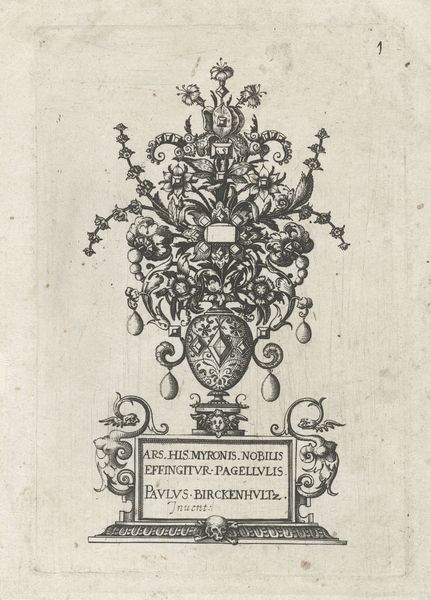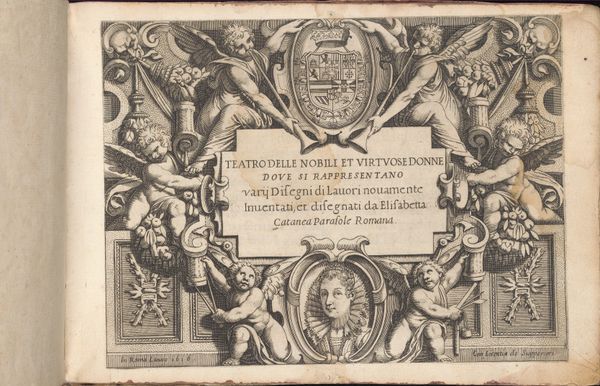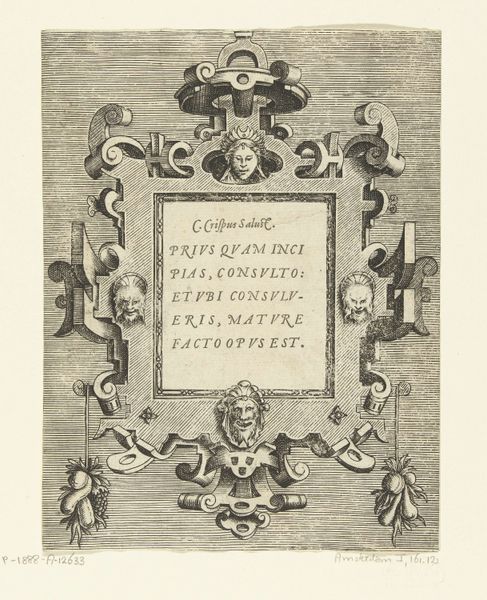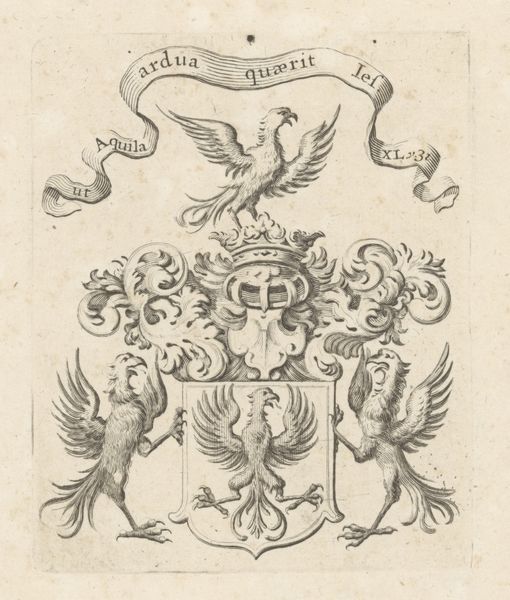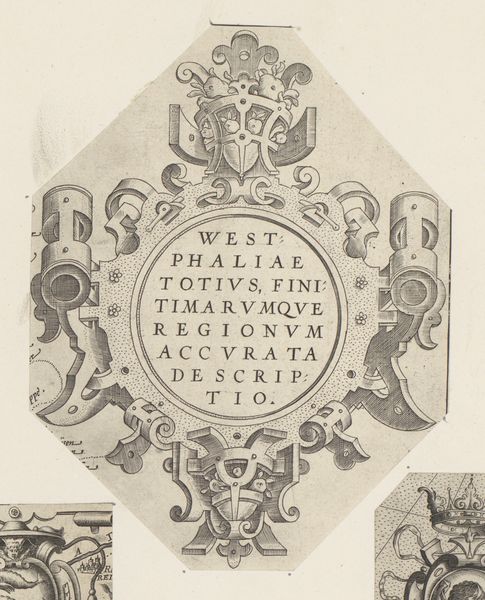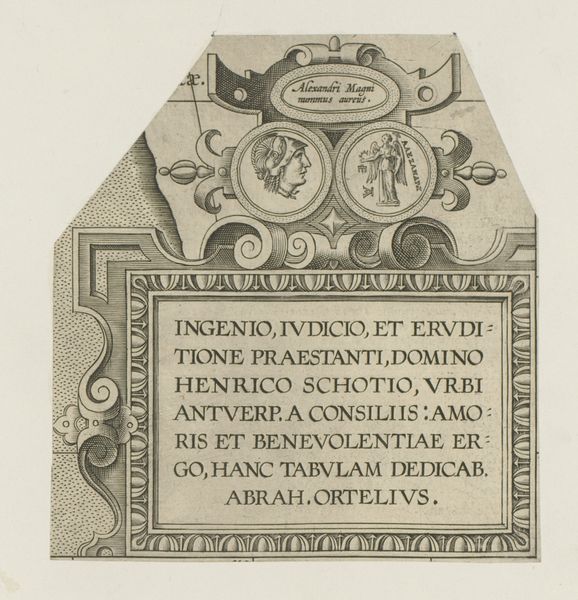
#
aged paper
#
toned paper
#
old engraving style
#
sketch book
#
personal sketchbook
#
pen-ink sketch
#
pen work
#
sketchbook drawing
#
storyboard and sketchbook work
#
sketchbook art
Dimensions: height 95 mm, width 123 mm
Copyright: Rijks Museum: Open Domain
Curator: Here we have an intriguing cartouche, "Cartouche met het wapen van Bohemen," dating back to 1570. It's an anonymous piece rendered in what appears to be pen and ink. Editor: My initial feeling? Somber elegance. The stark black lines against the toned paper lend a certain gravity, but there's a definite flair in the ornamentation too. It almost feels like a quiet declaration of power. Curator: Indeed. These cartouches were commonly used on maps during that era. More than simple labels, they often served to legitimise territorial claims or project the power of a specific region or ruler. Editor: Look at the crowned Bohemian lion. The lion symbolizes courage and nobility. The crown, of course, is a ubiquitous emblem of royal authority. Even the flourishes in the architectural frame contribute – they amplify the heraldic image above. Curator: Absolutely, it's a masterful blend of artistry and political messaging. Placing the arms so prominently was a conscious assertion of Bohemian identity and autonomy during a turbulent period in Central European history. You see, the Hapsburgs were already beginning to centralize the Empire around themselves. Editor: It's like a visual shorthand for asserting Bohemia's right to exist independently, to remain a sovereign entity. The overall classical Roman lettering supports that as well, bringing with it additional political connotations for viewers of the day. It reminds viewers to recognize power that stretches far back. Curator: Precisely. And given the style of the line work, we are most likely looking at a copper engraving here as well, or a wood block, made for print distribution. This tells us it was supposed to be distributed and proliferate across social classes. This was strategic to disseminate images like these that acted as status symbols for an established culture and reign. Editor: I see now how even something seemingly decorative, like this cartouche, is actually steeped in cultural memory and symbolic weight, not just for us now, but for its contemporary viewers as well. The power of symbols is undeniable. Curator: Precisely, understanding that blend gives us insights into how the socio-political landscape was expressed through art of the time.
Comments
No comments
Be the first to comment and join the conversation on the ultimate creative platform.
